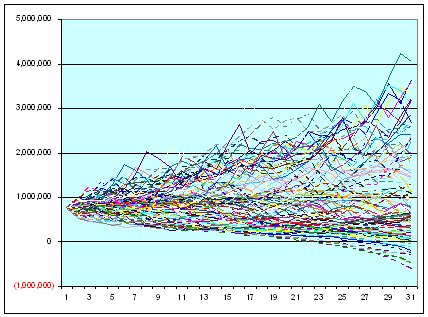What is everyone's opion on takeing a lump sum vs. pension. My dilema is that a lump sum payout (base on a 30 yr tres. rate of 6%) is $650K...my joint annuity option is $3674/mo. No inflation rider on it. At 4% SWR. my lump sum will deliver $2166/mo. I am currently 52...going for 55 ER. I have other investments...but need about $3500 from my pension benefit. The Mega corp I work for is in a steady industry...been in business 75 years...pension is funded 100%. What do you all think...any options that do not require me working past 55? Thanks for your feedback.
Rollie
Rollie

